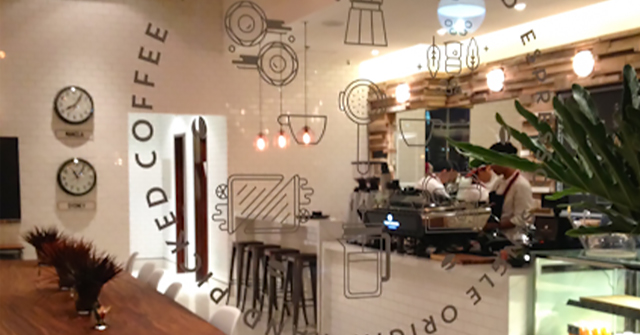
What are the 3 waves of coffee?
What are the waves of coffee?
- st Wave (1800s) : Coffee becomes a commodity, its consumption grows exponentially.
- nd Wave (1970) : American coffee giant Starbucks transforms coffee culture.
- rd Wave (2000s) : Coffee starts being purchased based on its production origin and its methods of production.
What is the third wave coffee movement?
Movement aiming to enhance coffee diversity. The term third wave coffee is a label given to coffee businesses opened after around the year 2000, which share similar priorities. Beans are typically sourced from individual farms, rather than countries and roasted more lightly to bring out their distinctive flavors.
What is third wave coffee?
Vietnamese coffee is like the photonegative of the acidic and fruity Scandinavian-style light roasts that have dominated third-wave coffee in the United States. It is instead nutty, earthy, dark, dense and above all intense — brewed using a cylindrical phin filter that’s like a silvery stepchild of the French press and the pourover.
What is the best K Cup?
here’s a flashback at some of Lundqvist’s biggest and best games as a Ranger: Details: In fitting fashion, Lundqvist had a big hand in lifting the Rangers into their first Stanley Cup Final in ...

What is 3rd Wave specialty coffee?
Third wave coffee is a movement in coffee marketing emphasizing high quality. Beans are typically sourced from individual farms and are roasted more lightly to bring out their distinctive flavors. Though the term was coined in 1999, the approach originates in the 1970s, with roasters such as the Coffee Connection.
What is 1st 2nd 3rd Wave of coffee?
1st Wave (1800s): Coffee becomes a commodity, its consumption grows exponentially. 2nd Wave(1970): American coffee giant Starbucks transforms coffee culture. 3rd Wave(2000s): Coffee starts being purchased based on its production origin and its methods of production.
Is philz coffee third wave?
San Francisco-based third-wave coffee chain Philz Coffee has been on an expansion tear - San Francisco Business Times.
What is the fourth wave of coffee?
The fourth wave is about bringing higher-quality coffee to the masses; it focuses on expanding from a small corner of the market to bring it to more and more people. It is characterised by the commercialisation of quality coffee, which becomes more accessible and widespread in the process.
What is the 5th wave of coffee?
The 5th Wave reflects a powerful new era of scaled boutique hospitality and is the current ideology shaping business trends across the global coffee industry. Put simply 5th Wave implies scaling up consistently high quality to achieve a highly successful, customer-centric and sustained business outcome.
What are the different coffee waves?
In a simple sense, the three waves of coffee represent how accessible or appreciated coffee was at certain points in time: the first wave represents the shift from novelty to commodity, the second wave represents a shift from commodity to culture, and the third wave represents a shift from culture to consumer awareness ...
What is similar to Philz Coffee?
Philz Coffee competitors include ezCater, Starbucks, Peet's Coffee & Tea, Blue Bottle Coffee and Stumptown Coffee Roasters.
Is Philz Coffee Palestinian owned?
Phil Jaber, born in Palestine, and his son Jacob founded Philz Coffee in 2003. Phil operated a corner grocery in San Francisco's Mission District for over 25 years and had strong ties to the community.
Why is Philz Coffee so popular?
Philz Coffee sees itself as a unique experience, and in many ways it is. One of the major differences between Philz Coffee and your average local coffee shop is that it doesn't serve espresso — and that means there are no lattes to be found on its menu (via HuffPost).
What is Second Wave Coffee?
The second wave of coffee was when coffee started to become a basic household staple. It was also the period in which the rise of mainstream coffee shops like Starbucks and Peets took off in the US, and coffee culture became a part of people's daily lives.
What wave is Starbucks?
2nd WaveThe 1st Wave describes traditional 20th century coffee drinking and reflects differing historical cultures and geographies. The 2nd Wave is typified by the early growth of lifestyle branded chains, such as Starbucks Coffee Company, 3rd Wave by craft or artisan coffee, and the 4th Wave by the 'science of coffee'.
What is artisan coffee?
Artisan coffees are produced when a grower is prepared to go above and beyond to ensure high-quality outcomes and when a roaster is willing to pay a higher price to support quality.
About Third Wave Coffee
Third-wave coffee may sound like a ‘hipster barista’ term, but it actually refers to a specific time period: 2000s until now. The term ‘third wave coffee’ comes from two possible sources: a Norwegian reporter that used the term in 2003 and an article that also used it in an article right before the year 2000.
What about the First and Second Waves?
As the name may imply, third-wave coffee isn’t the first “ coffee wave ” to hit the market. The evolution of the coffee market is almost unbelievable, even when talking about coffee makers and brewing methods.
Conclusion
Third Wave coffee is a nickname for today’s coffee shops and going back until the 2000s, marking a time that raised the bar for quality in coffee. Coffee shops opened up, serving high-quality coffee instead of average, low-cost beans. Coffee has come a long way since the first and second waves, proving that some things age better with time.
